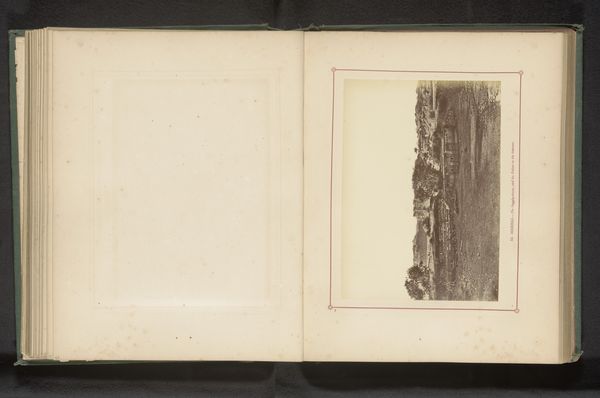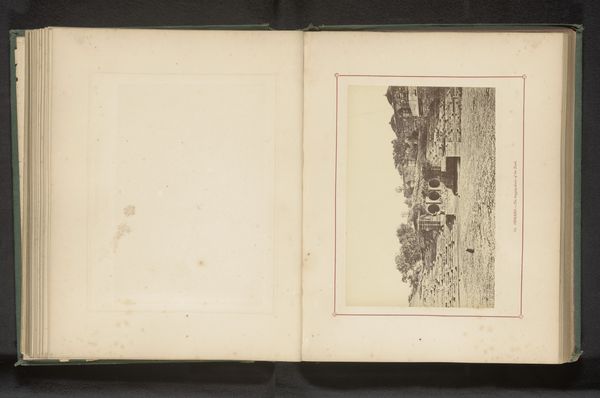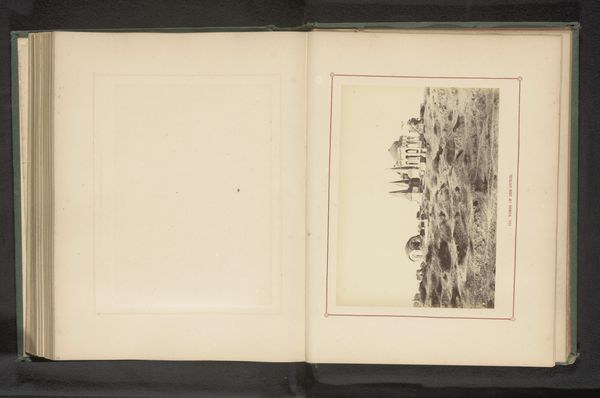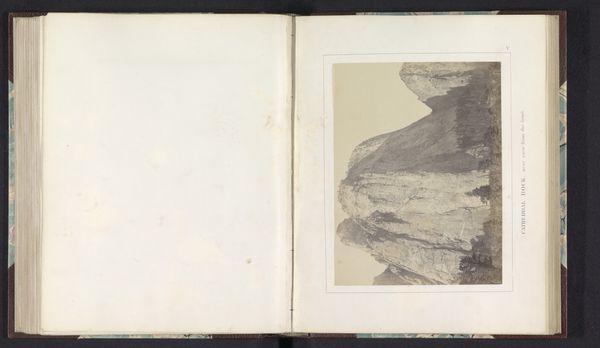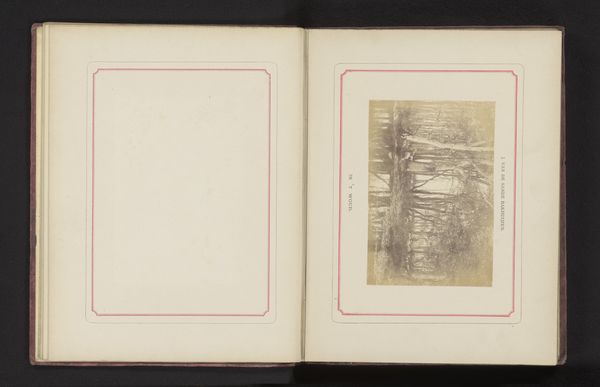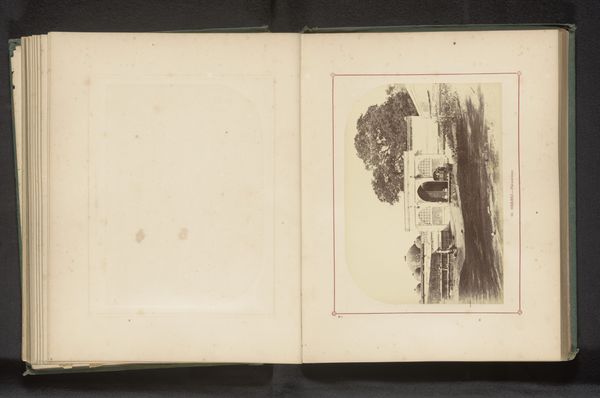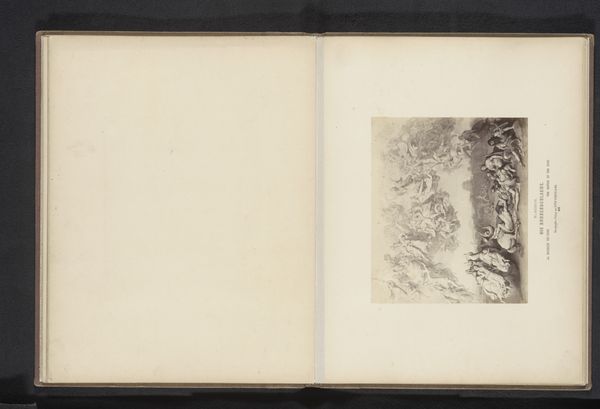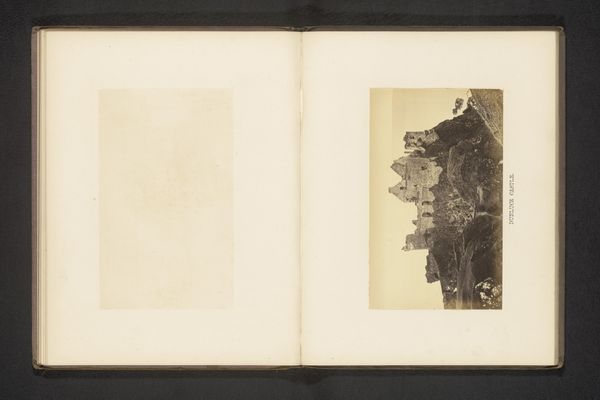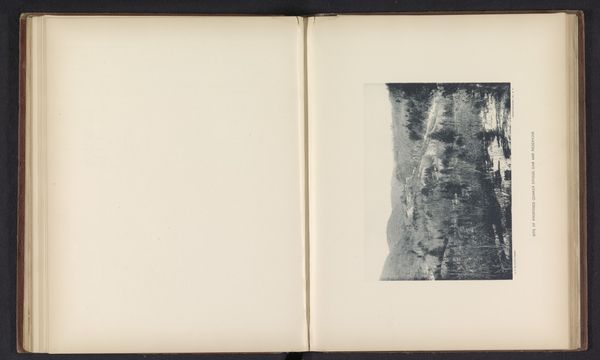
drawing, print, paper, ink, engraving
#
drawing
#
aged paper
#
toned paper
#
homemade paper
#
ink paper printed
# print
#
asian-art
#
sketch book
#
landscape
#
paper
#
personal sketchbook
#
ink
#
pen and pencil
#
sketchbook drawing
#
islamic-art
#
sketchbook art
#
engraving
Dimensions: height 140 mm, width 198 mm
Copyright: Rijks Museum: Open Domain
Curator: This is an engraving by Thomas Biggs, titled "Gezicht op een tombe bij Shah-e-Alam's Roza in Ahmedabad," created before 1866. It resides within a sketchbook, rendered with ink on paper. Editor: It evokes a sense of decay and timelessness, a kind of poignant serenity despite what appears to be ruin. The strong contrasts create a compelling graphic quality. Curator: Precisely. The engraving technique lends itself to stark contrasts, delineating the architectural details with remarkable clarity. Note the artist's use of line weight to suggest depth and texture in the stonework. The dome, for instance, is meticulously rendered with fine hatching. Editor: And the seemingly uncontrolled foliage creeping up the structure hints at larger societal and cultural implications—perhaps the effects of colonialism on the built environment. Is the artist, through this contrast, trying to signal a sort of commentary about time's impact? Curator: That's a valid interpretation. The overgrown state challenges the ideal of the perfectly maintained monument. One can't overlook the visual effect, however, of this contrasting organic and geometric design—the rough texture against clean line—regardless of sociopolitical undercurrents. Editor: Of course, we should also note the visual tension between the structured geometry of the architecture and the loose foliage can be seen as a commentary of colonialist perspectives against those local histories being told in those geometries. What narratives do you think these places hold? Who tells them, and whose perspectives get lost in translation? Curator: Certainly, and thinking purely aesthetically, the artist directs our eye carefully through the composition with their application of dense mark making and selective absence of linework. The way the print is presented within an aged sketchbook enhances that notion, no? Editor: It deepens the narrative—gives that historical weight palpable form. Thinking of this image in circulation is really a reminder of not only where we've been, but whose narratives get left out along the way, and whose stay centerstage in cultural and historical archives. Curator: Indeed, and perhaps it is the role of close looking to reassess assumptions about those centers. Editor: Agreed, perhaps even, art such as this acts as an invitation.
Comments
No comments
Be the first to comment and join the conversation on the ultimate creative platform.

